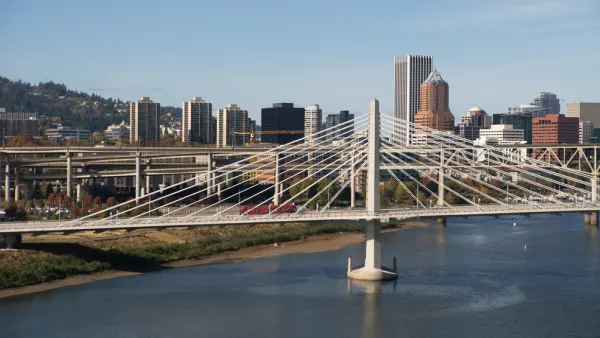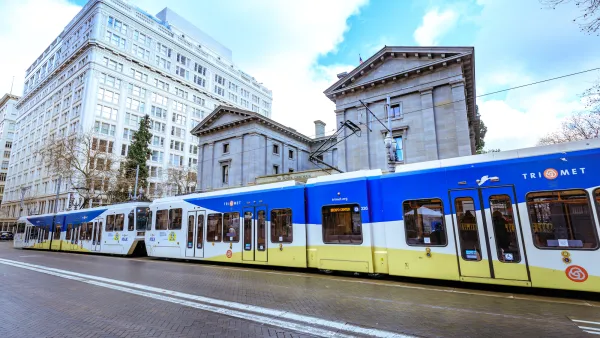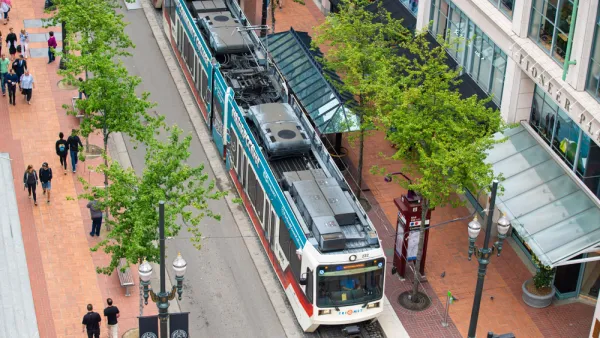Kaid Benfield looks at shortcomings of the dominant national apparatus for regional planning - the Metropolitan Planning Organization - through the lens of transportation, and pines for new mechanisms for regional cooperation.
The opportunities and challenges of contemporary planning and development, from transportation to economic development to climate change, do not stop at municipal borders. However, planning often does. As such, according to Benfield, "Our highly fragmented "system" of local governments makes it nearly impossible to address important issues facing metropolitan America in a rational way."
Using case studies of failed transportation integration in Philadelphia and Washington D.C., Benfield points to the shortcoming of MPOs in integrating cross-jurisdictional planning: "Especially when it comes to land use, MPOs are basically advisory, and their ability to influence what jurisdictions within their purview choose to do with regard to transportation, economic development, and other matters of great import tends to be extremely limited."
So what models for more effective regional cooperation are out there? Benfield looks to Portland's precedent-setting Metro, "the nation's only directly elected regional government with legal authority over regional land use, transportation, and other specified issues in three counties and 25 cities...But Metro's jurisdiction does not extend to those parts of the Portland region across the Columbia River in Washington, which lag behind their Oregon neighbors in addressing these issues."
He also looks to the SB 375, California's "innovative planning law to reduce pollution of greenhouse gases" as "the new frontier for regionalism in the US." The jury is out, however, on the extent to which the economic and regulatory incentives included in the law will be enough to empower the state's MPOs to exercise influence over regional land use and transportation patterns to a larger extent than prior models.
FULL STORY: Sustainability in the crazy-quilt world of metro regions

Analysis: Cybertruck Fatality Rate Far Exceeds That of Ford Pinto
The Tesla Cybertruck was recalled seven times last year.

National Parks Layoffs Will Cause Communities to Lose Billions
Thousands of essential park workers were laid off this week, just before the busy spring break season.

Retro-silient?: America’s First “Eco-burb,” The Woodlands Turns 50
A master-planned community north of Houston offers lessons on green infrastructure and resilient design, but falls short of its founder’s lofty affordability and walkability goals.

Test News Post 1
This is a summary

Analysis: Cybertruck Fatality Rate Far Exceeds That of Ford Pinto
The Tesla Cybertruck was recalled seven times last year.

Test News Headline 46
Test for the image on the front page.
Urban Design for Planners 1: Software Tools
This six-course series explores essential urban design concepts using open source software and equips planners with the tools they need to participate fully in the urban design process.
Planning for Universal Design
Learn the tools for implementing Universal Design in planning regulations.
EMC Planning Group, Inc.
Planetizen
Planetizen
Mpact (formerly Rail~Volution)
Great Falls Development Authority, Inc.
HUDs Office of Policy Development and Research
NYU Wagner Graduate School of Public Service




























